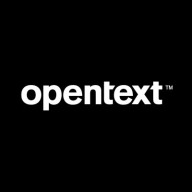

OpenText ALM / Quality Center and PractiTest are two popular solutions for application lifecycle management and quality management. PractiTest has the upper hand due to its modern features and positive user reviews.
Features: OpenText ALM / Quality Center is praised for its comprehensive defect tracking, integration capabilities, and robust reporting tools. PractiTest offers strong test management, enhanced reporting functionalities, and a modern, customizable interface that users find more valuable.
Room for Improvement: Users pinpoint that OpenText ALM / Quality Center could benefit from an updated design, improved performance speed, and better user interface. PractiTest users suggest enhancements in automation capabilities, integration options, and additional reporting features.
Ease of Deployment and Customer Service: OpenText ALM / Quality Center deployment process can be complex, requiring significant setup time. PractiTest is highlighted for its straightforward deployment and excellent customer support, with reliable assistance and quick response times.
Pricing and ROI: OpenText ALM / Quality Center's setup costs can be high, and its ROI is mixed based on user reviews. PractiTest offers competitive pricing with a quicker return on investment according to user feedback, making its pricing model more attractive for cost-conscious tech buyers.

Manage your QA and Testing process, controlling your testing tasks while getting complete visibility into your results, and most importantly releasing your products in a professional way
Professional end to end QA management for your manual and automation testing.We monitor all Application Lifecycle Management (ALM) Suites reviews to prevent fraudulent reviews and keep review quality high. We do not post reviews by company employees or direct competitors. We validate each review for authenticity via cross-reference with LinkedIn, and personal follow-up with the reviewer when necessary.